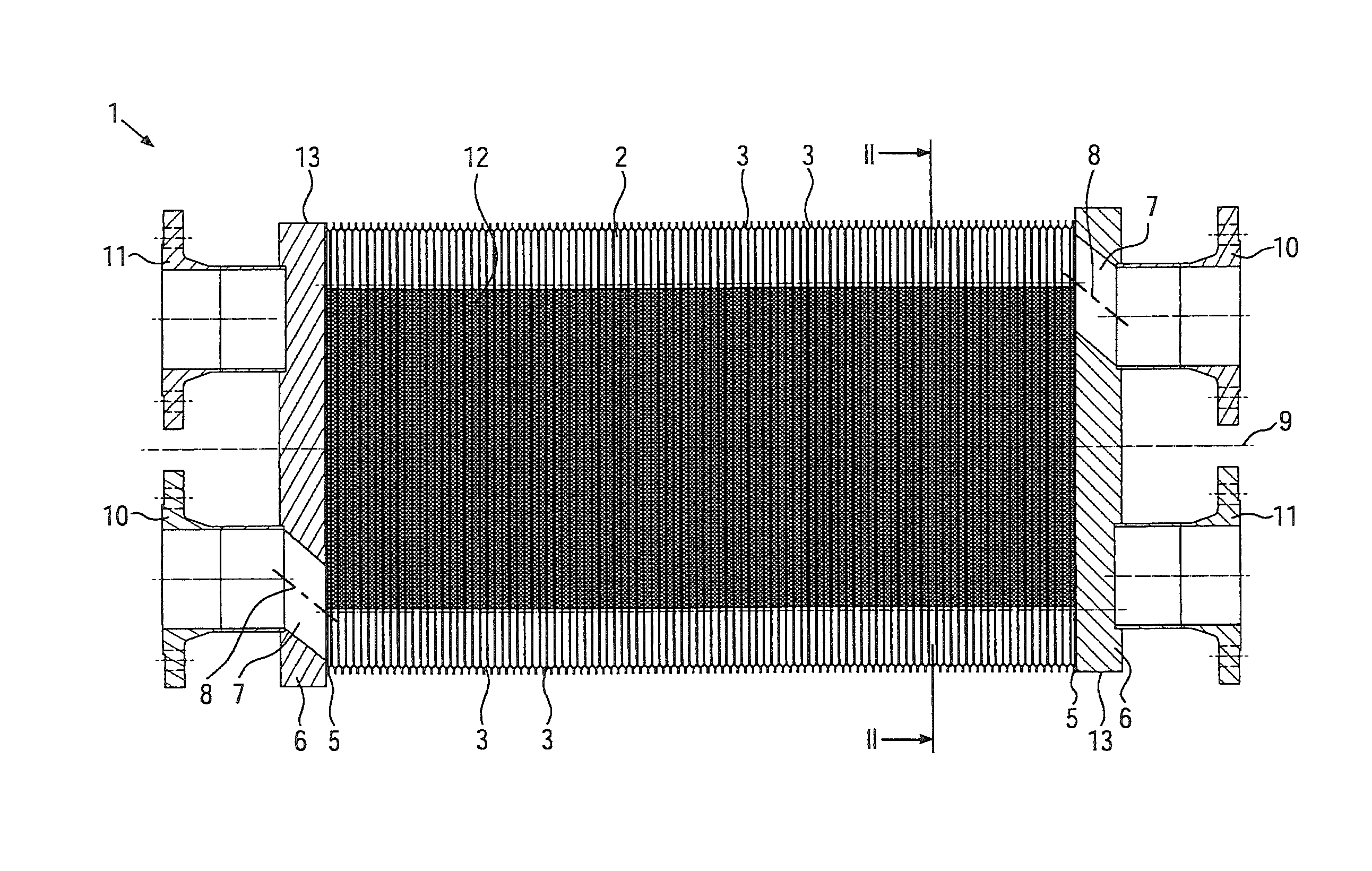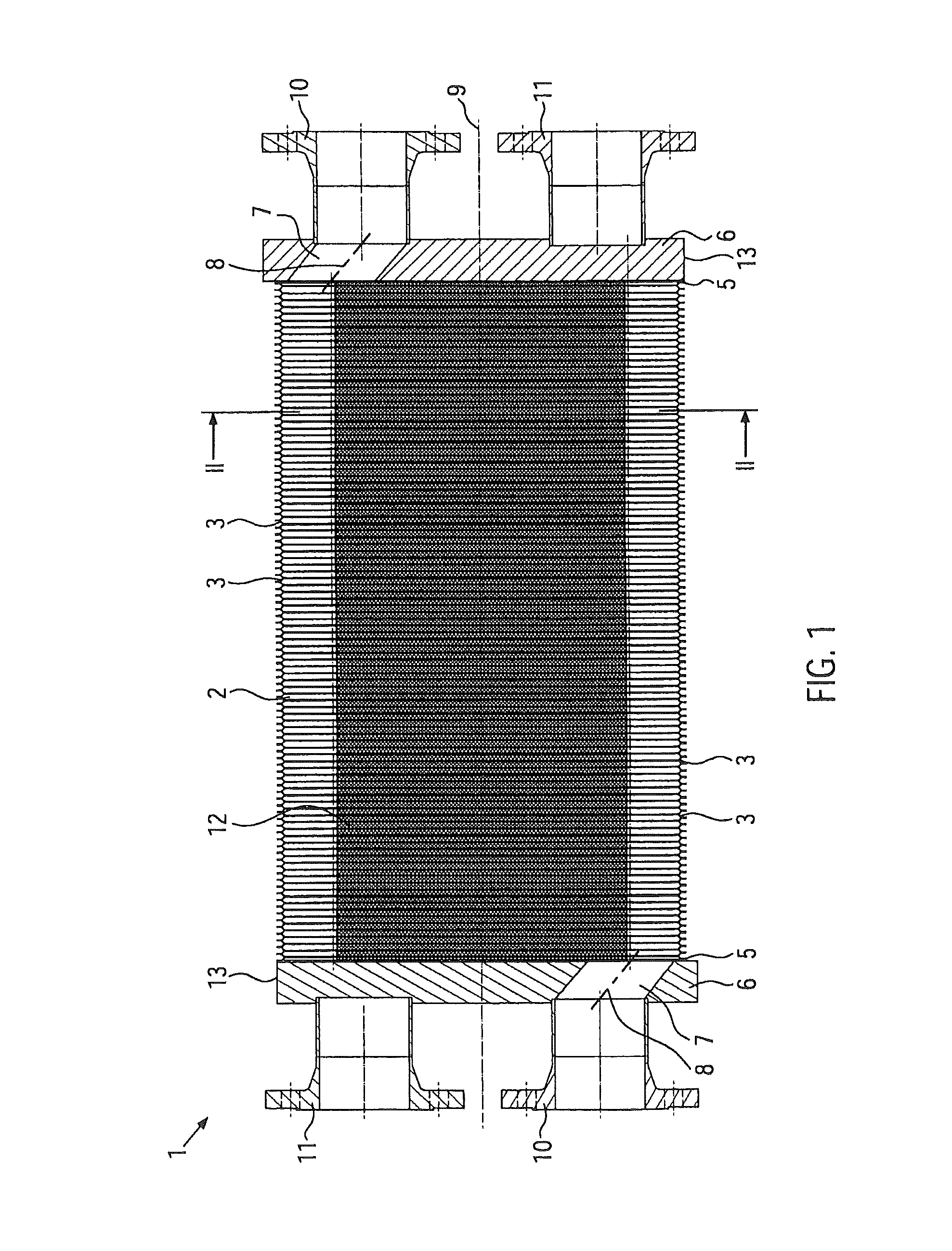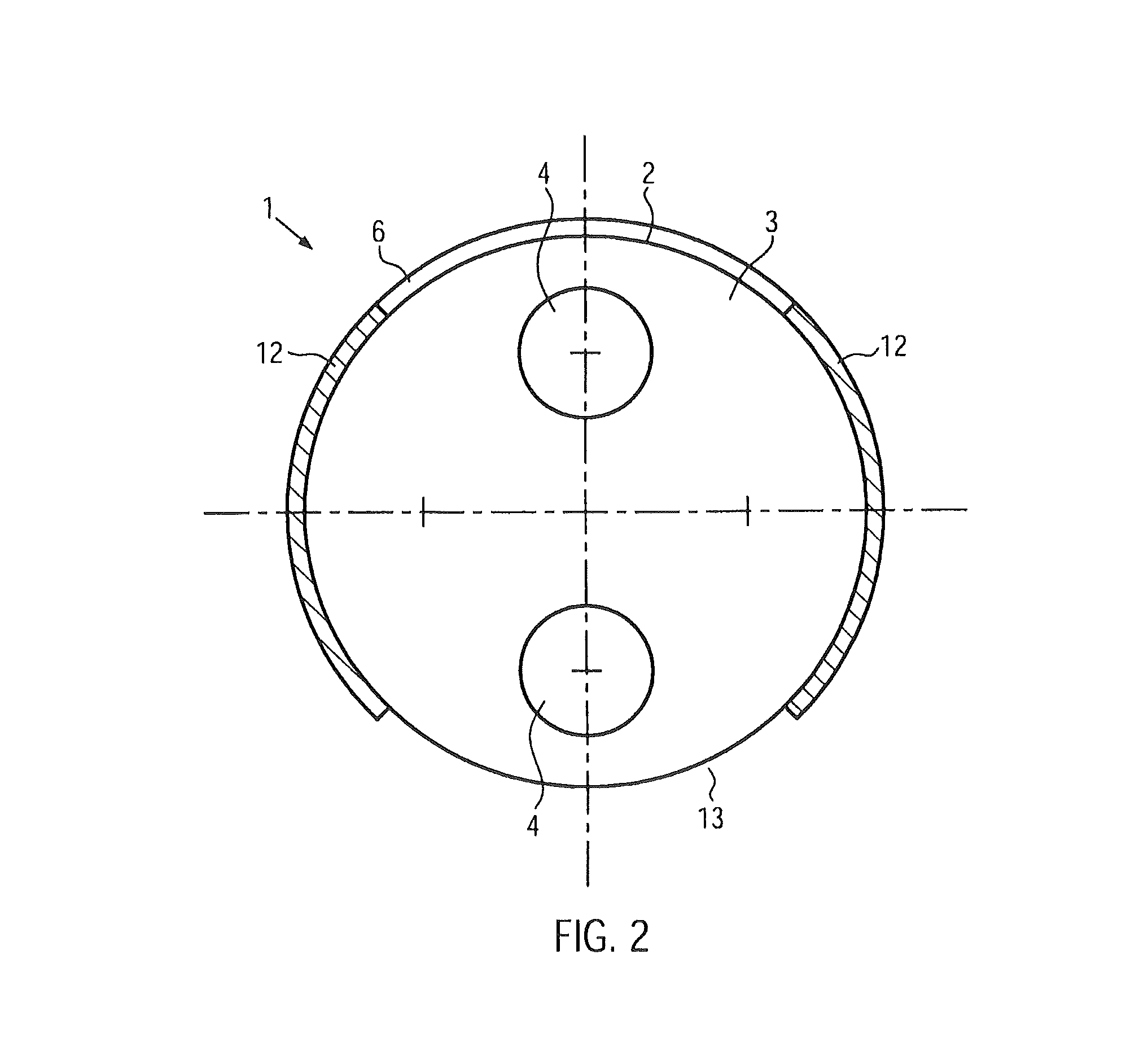Conversion set for a tube bundle heat exchanger
a heat exchanger and conversion set technology, which is applied in the direction of heat exchanger fastening, mounting, lighting and heating apparatus, etc., can solve the problems of increasing energy costs of plants, reducing the efficiency of tube bundle heat exchangers, so as to achieve easy repair or maintenance of the plate heat exchanger unit, the effect of simple connection
- Summary
- Abstract
- Description
- Claims
- Application Information
AI Technical Summary
Benefits of technology
Problems solved by technology
Method used
Image
Examples
Embodiment Construction
[0033]FIG. 1 illustrates a side view of a plate heat exchanger unit 1. The plate heat exchanger unit 1 comprises a plate packet 2 which comprises at least two heat exchanger plates 3. In the present case the plate packet 2 comprises a large number of heat exchanger plates 3. Each heat exchanger plate 3 has at least one through hole 4, preferably two through holes 4. This can be seen for example in FIG. 2. In each case two heat exchanger plates 3 are joined together along their through holes 4, preferably by welding. The plate pairs thus created are welded together along the periphery of the heat exchanger plates 3 so that the plate packet 2 is produced. The thickness of the heat exchanger plates 3 is about 0.6 to approximately 1 mm. It is also conceivable however to use thicker or thinner heat exchanger plates.
[0034]At both ends of the plate packet 2 in each case the outer heat exchanger plate 3 is joined to a support plate 5, preferably by welding. The heat exchanger plates 3 are p...
PUM
 Login to View More
Login to View More Abstract
Description
Claims
Application Information
 Login to View More
Login to View More - R&D
- Intellectual Property
- Life Sciences
- Materials
- Tech Scout
- Unparalleled Data Quality
- Higher Quality Content
- 60% Fewer Hallucinations
Browse by: Latest US Patents, China's latest patents, Technical Efficacy Thesaurus, Application Domain, Technology Topic, Popular Technical Reports.
© 2025 PatSnap. All rights reserved.Legal|Privacy policy|Modern Slavery Act Transparency Statement|Sitemap|About US| Contact US: help@patsnap.com



